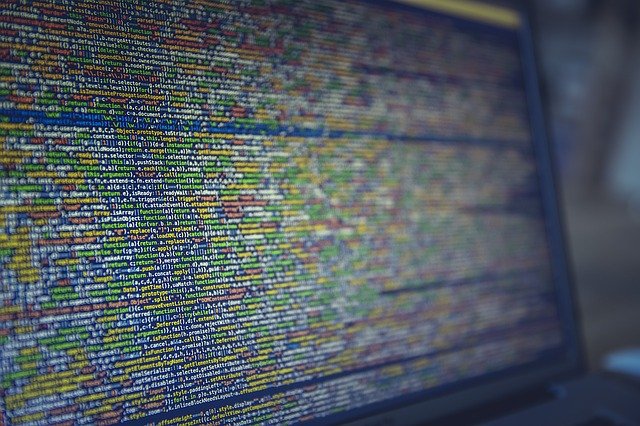Have you ever experienced a sluggish PC or strange pop-ups appearing on your screen? If so, chances are your computer has been infected with a virus. With the rise of technology and internet usage, viruses have become more common than ever before. The good news is that there are ways to scan for and remove viruses from your PC. In this blog post, we will cover everything you need to know about how to scan your PC for viruses and keep it safe from future infections. So grab a cup of coffee and let’s dive in!
What is a virus?
A virus is a malicious software program that can infect your PC and cause damage to your files, data, and even hardware. It is designed to replicate itself and spread from one computer to another through various means such as email attachments, downloads, or infected websites.
Viruses are created by hackers who intend to steal personal information or use your PC for their own purposes without your knowledge. They attach themselves to legitimate programs or documents so that when you open them, the virus activates and starts spreading.
There are many different types of viruses out there, including Trojan horses, worms, spyware, adware, and ransomware. Each type has its own unique characteristics and methods of infection.
While some viruses are relatively harmless and only slow down your computer’s performance or display annoying pop-ups on your screen; others can be extremely dangerous and damaging. They can delete important files or even render your computer useless.
It’s crucial to keep in mind that prevention is always better than cure when it comes to protecting yourself against viruses. Stay tuned for our next section where we’ll cover how viruses typically spread so you know what signs to look out for!
What are the different types of viruses?
Viruses are malicious software programs that can cause damage to your computer system. There are different types of viruses, and each type works differently. Some viruses attack the data stored on your computer, while others try to control or manipulate your computer’s operations.
One common type of virus is a trojan horse virus. This type of virus disguises itself as a legitimate program but once you install it on your PC, it unleashes its malicious code which can harm your system.
Another type of virus is the worm virus which spreads from one computer to another using network connections without any intervention by users.
A boot sector virus infects the master boot record (MBR) or volume boot record (VBR) in order to execute when you start up the computer.
Macro viruses use macro-enabled applications such as Microsoft Word and Excel to spread their malicious codes through documents shared between computers via email or USB drives.
File infector viruses modify executable files so that they contain infected code which executes whenever the program runs.
It’s important for PC users to be aware of these different types of viruses so they can take appropriate measures in preventing them from infecting their systems.
How do viruses spread?
Viruses can spread in various ways. One of the most common is through email attachments or downloads from untrusted websites. Once downloaded, these viruses may infect your PC and start to damage your files.
Another way that viruses can spread is through file sharing software such as torrents. Torrents are often used for sharing large files, but they can also be a source of malicious software. Downloading torrent files without proper precautions could result in infecting your computer with malware.
Social media platforms are another avenue for virus transmission since links shared by friends might lead you to click on dangerous links that allow hackers to access personal information stored on your device.
In addition, USB drives and other external storage devices have been known carriers of malware infections when inserted into an already infected computer system.
It’s important to note that some types of viruses can even spread across networks within organisations if security measures aren’t properly enforced.
To prevent the spread of viruses, always exercise caution when opening emails or clicking on links from unknown sources online and ensure all necessary safety protocols are followed before downloading any content onto your PC or laptop.
How to prevent viruses from infecting your PC
Preventing viruses from infecting your PC is much easier than removing them. Here are some tips to help you keep your PC safe:
Firstly, always ensure that your operating system and software programs are up-to-date with the latest security patches. This will help to fix any vulnerabilities that could be exploited by hackers.
Secondly, never click on suspicious links or download attachments from unknown sources. Cybercriminals often use phishing scams to trick users into clicking on malicious links or downloading infected files.
Thirdly, install a reputable antivirus program and keep it updated regularly. Antivirus software can detect and remove viruses before they cause any harm.
Fourthly, enable a firewall in your computer’s settings. A firewall acts as a barrier between your PC and the internet, blocking unauthorized access to your system.
Practice good online habits such as using strong passwords for all of your accounts and being cautious when sharing personal information online. By following these steps, you can significantly reduce the risk of virus infections on your PC.
How to remove a virus from your PC
If your PC has been infected by a virus, it is essential to remove it as soon as possible. Here are some steps you can take to remove the virus from your PC.
Step 1: Run an Antivirus Scan
The first step in removing a virus from your PC is running a full system scan using trusted antivirus software. Make sure that the antivirus program is up-to-date and capable of detecting different types of malware.
Step 2: Enter Safe Mode
Entering safe mode will prevent any third-party applications or services from running on your computer. To enter safe mode, restart your computer and press F8 repeatedly until you see the Advanced Boot Options menu. Select “Safe Mode with Networking” and press Enter.
Step 3: Delete Temporary Files
Deleting temporary files can help in removing viruses from your PC. Go to Disk Cleanup utility and select all options related to temporary files such as Recycle Bin, Downloaded Program Files, and Temporary Internet Files.
Step 4: Remove Suspicious Programs
If you find any suspicious programs installed on your system after scanning with an antivirus program, uninstall them immediately through Control Panel > Programs & Features option.
By following these simple steps, you should be able to completely remove viruses from your PC quickly without needing professional assistance.
Conclusion
Protecting your PC from viruses is essential to keep it running smoothly and protect your personal information. By following the steps outlined in this article, you can prevent virus infections and remove any existing viruses on your computer.
Remember to always keep your antivirus software up-to-date, avoid opening suspicious emails or clicking on unknown links, and regularly scan your PC for viruses. With these simple measures, you can ensure that your PC remains safe and secure from any potential threats. Stay vigilant and stay protected!











FIND US ON SOCIALS